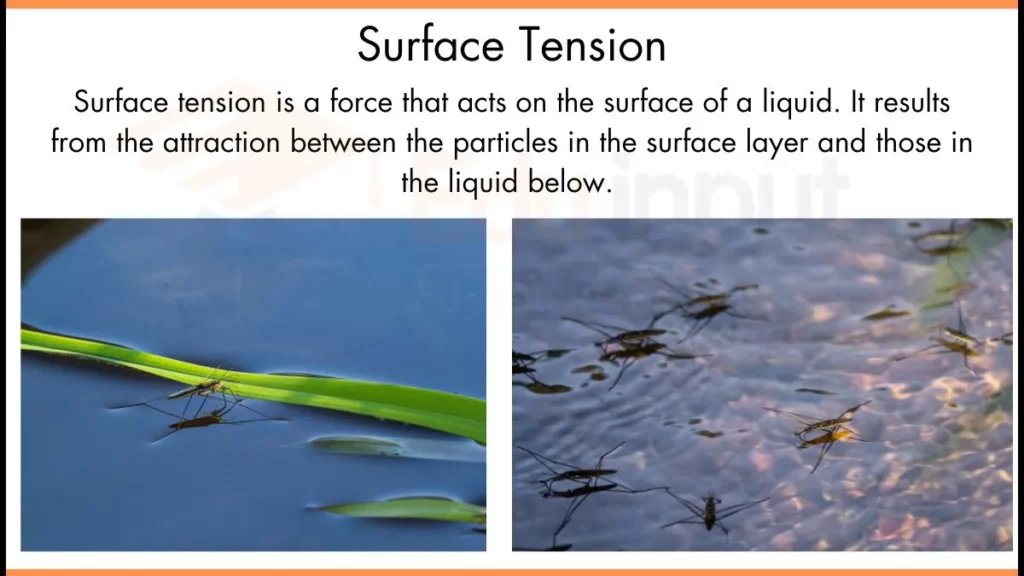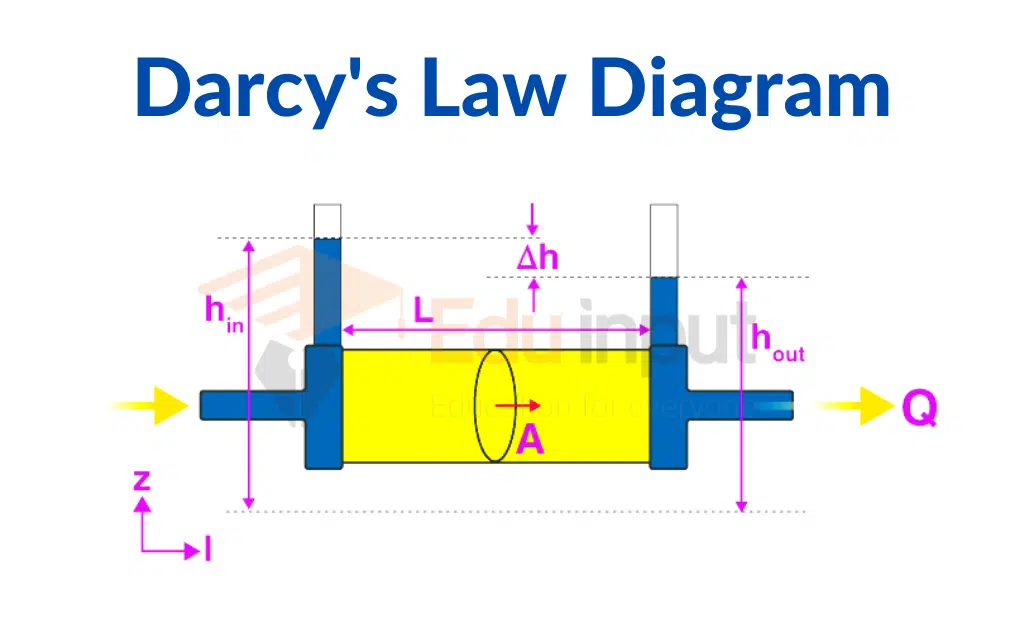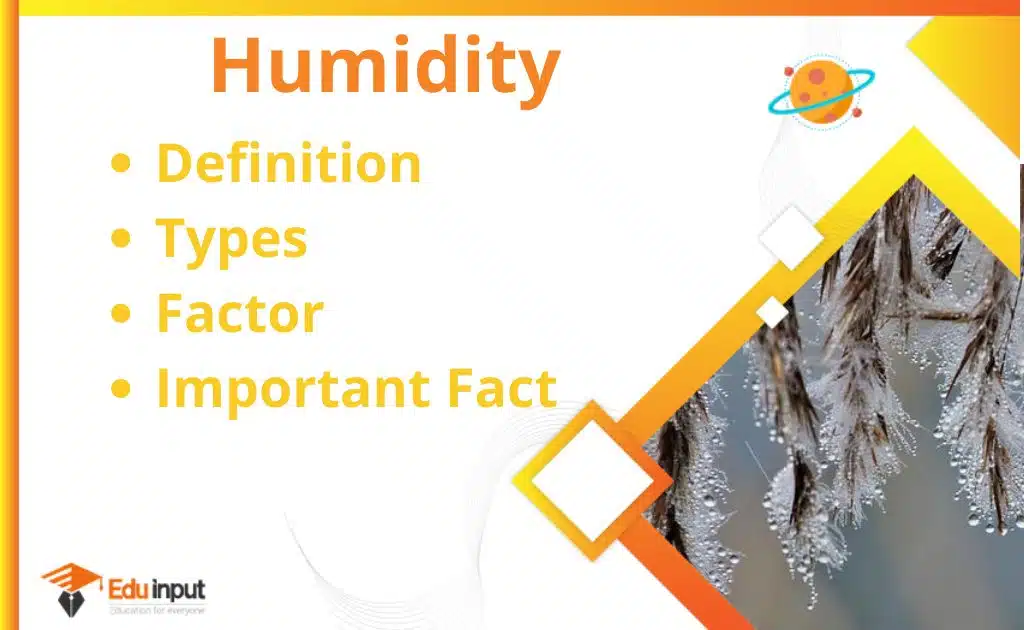Surface Tension-Definition, Formula, Causes & Applications
Surface Tension Definition
Surface tension is a force that acts on the surface of a liquid. It results from the attraction between the particles in the surface layer and those in the liquid below. This force makes the liquid’s surface act like an elastic membrane. Surface tension causes the liquid to minimize its surface area.

As a result, liquids form drops or spheres. The surface layer pulls inward and reduces the surface exposure. This effect is strongest at the surface, where molecules are not surrounded on all sides. The force comes from the cohesive forces between liquid molecules. Liquids like water have strong surface tension because of their molecular attraction.
Surface tension also helps in various natural phenomena, such as water droplets or insects walking on water. The tension is higher in liquids with stronger intermolecular forces.
In simple terms, surface tension is the “stickiness” at a liquid’s surface, making it behave like a stretched elastic film. This property plays a key role in processes like capillary action or the formation of bubbles.

Surface Tension Formula
The surface tension formula expresses the relationship between the force and the length of the liquid surface. It is given by:
T=F/L
In this formula,
- T represents surface tension,
- F is the force acting on the surface
- L is the length along the surface where the force acts.
Another way to define surface tension is by using work and area. The formula in this case is:
T = W/A
Here,
- W is the work done,
- A is the change in the area of the surface.
Surface Tension Unit
Surface tension measures the force acting along a liquid’s surface. It is the force per unit length.
| Category | Unit Type | Unit | Details |
|---|---|---|---|
| Surface Tension | SI Unit | Newton per meter (N/m) | Measures force in newtons over one meter of liquid surface. |
| Surface Tension | CGS Unit | Dyne per centimeter | Measures force in dynes over one centimeter. 1 dyne = 10-5 N |
Conversion Between Units
- 1 dyne/cm = 0.001 N/m
- 1 N/m = 1,000 dyn/cm
Water at 20°C has a surface tension of about 72 dyn/cm or 0.072 N/m.
Causes of Surface Tension
Surface tension arises from cohesive forces between liquid molecules. These forces are stronger at the surface because surface molecules lack neighbors in all directions. This imbalance pulls surface molecules inward, creating a net force that resists breaking.
Several factors influence surface tension:
- Temperature: Higher temperatures make molecules move more, weakening intermolecular forces and lowering surface tension.
- Pressure: Changes in pressure can alter the liquid’s surface tension.
- Viscosity: Liquids with higher viscosity often show higher resistance to surface deformation.
Surface tension explains why liquids resist external forces and form distinct shapes. For example, it allows insects to walk on water, helps needles float, and prevents rainwater from seeping through tents. This property also shapes liquid droplets and supports disinfectants in covering surfaces efficiently.
Applications of Surface Tension
Surface tension has many practical uses in daily life and industries.
- Floating Objects: Small objects like needles float on water because of surface tension.
- Insect Movement: Water-walking insects use surface tension to move without sinking.
- Waterproof Fabrics: Materials like tents resist water because surface tension prevents it from penetrating.
- Droplet Formation: Surface tension shapes droplets, which helps in printing, spraying, and painting.
- Capillary Action: Liquids rise in narrow tubes due to surface tension, aiding plants and medical tools.
- Cleaning Products: Soaps and disinfectants spread better because surface tension lets them cover surfaces evenly.
- Bubbles and Foams: Surface tension stabilizes bubbles, making them useful in cleaning and chemical processes.
How to Measure Surface Tension?
Here are a few Methods to Measure surface tension:
- Spinning drop method
- Pendant drop method
- Du Noüy–Paddy method
- Du Noüy ring method
- Wilhelmy plate method
.







Leave a Reply